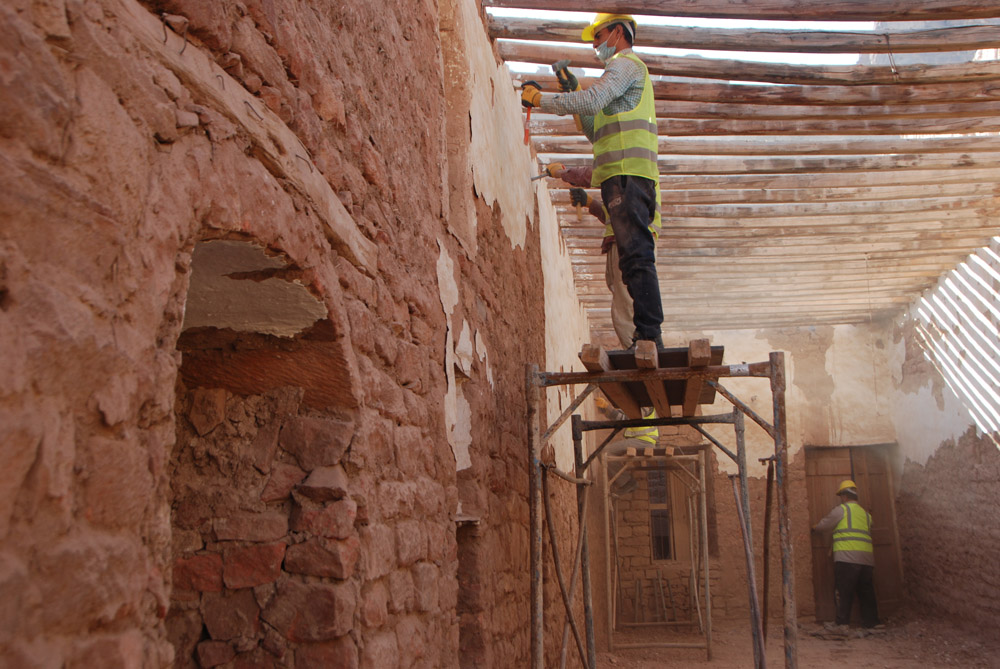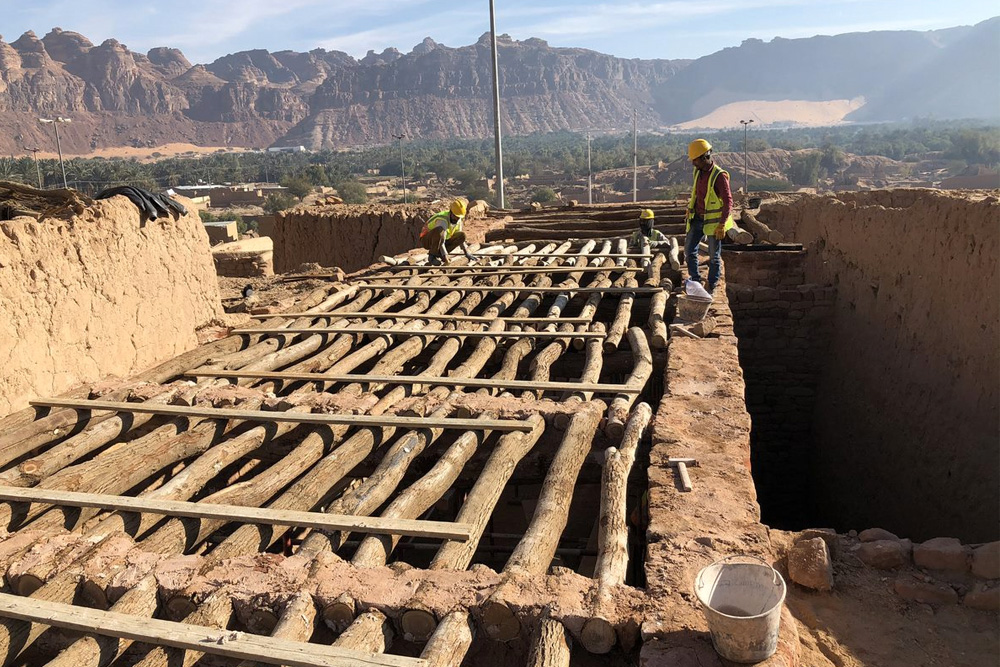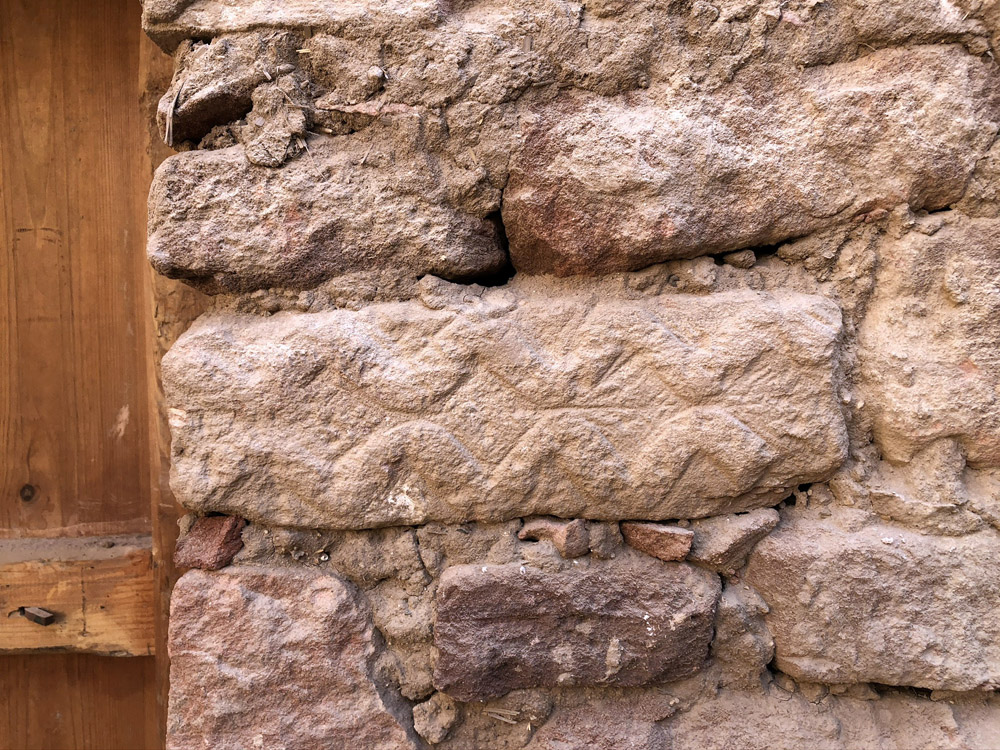
The final stages of restoration work on the centuries-old Hamad Bin Yunus and AlZawiyah mosques in AlUla Old Town are underway, according to the Royal Commission for AlUla (RCU). Both mosques are located in the AlHalaf neighbourhood south of the Mussa Bin Nussair citadel and reflect AlUla’s history as an important stopping point on pilgrimages to Mecca and Medina for over 800 years. The Hamad Bin Yunus mosque dates from the 8th century AH (14th century CE), while the dates of AlZawiyah mosque’s original construction are still being investigated.

Roof restoration al AlZawiyah mosque
Use of traditional methods and materials ensure authenticity of the buildings and highlight the RCU’s commitment to international best-practice standards in heritage restoration and conservation. The commission, which was launched by royal decree in July 2017, has worked closely with international experts and AlUla’s community to restore the mosques and understand better the traditional building techniques originally used.
In restoring the mosques’ roofs, the restoration team used locally-sourced tamarisk wood joists, which were then layered with palm-leaf branches (jarid) and palm-leaf matting (hassir). The final element of straw and mud bricks on top provides light-weight and historically accurate protection against the elements.

Repairing the roof of Hamad Bin Yunus mosque
The use of similarly traditional techniques extended to the restoration of the mosques’ walls and floors. After the brickwork beneath was carefully studied, traditional mud-plaster was then hand applied in age-old fashion by first throwing balls of mud at the walls during shady times of the day to prevent drying, then smoothing down with a wooden flattener.
RCU is actively collaborating with The Program for the Reconstruction of Historical Mosques, adopted by the Saudi Ministry of Tourism and with the partnership of the Ministry of Islamic Affairs, to ensure the mosques’ religious roles are fully respected. Both mosques have undergone a series of restorations in their history, the most recent occurring in 1373 AH (between 1953 and 1954 CE), during the reign of his late Majesty King Saud.

The authority’s mosque conservation programme is part of its commitment to protecting, preserving, sharing, and celebrating AlUla’s heritage as it establishes AlUla as a living museum, at the forefront of Saudi Arabia’s tourism sectors.
The work on the mosques is part of wider restoration and conservation projects in AlUla Old Town by RCU, which was established to preserve and develop AlUla, a region of outstanding natural and cultural significance in north-west Saudi Arabia. The commission aims to share and celebrate the area’s human heritage, said to be over 200,000 years old, with the world as it prepares to responsibly re-open for cultural, historic and eco-tourism next month.
“From pre-historic burial sites to the cutting edge Maraya venue, and from pre-Islamic Kingdoms of Dadan and Lihyan to the Islamic Old Town, we’re excited to celebrate and share the cultural oasis that is AlUla with the world,” Dr Abdulrahman AlSuhaibani, Consultant for Archaeology and Heritage at RCU, said. “As we explore and make new discoveries across over 22,000km2 of heritage, we’re committed to protecting and preserving AlUla’s incredible human history for the benefit of residents and visitors alike. These two mosques were once vital to their community, and we look forward to them bringing people together once more.”

















